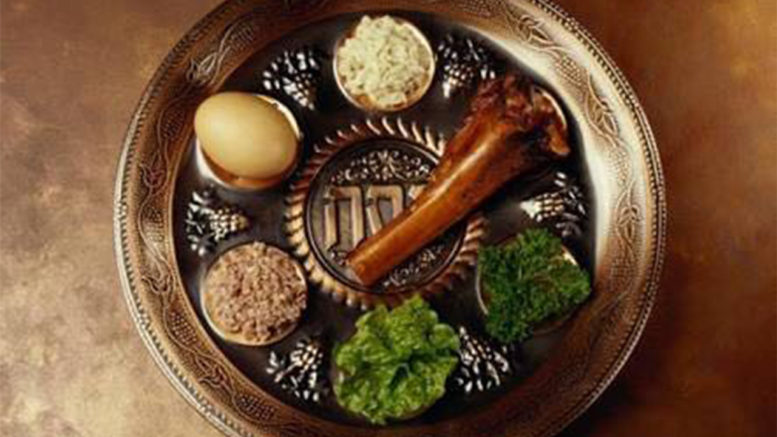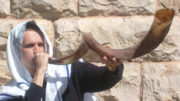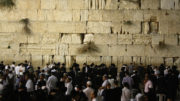One of the Jewish religion’s most sacred and widely observed holidays, Passover (or Pesach in Hebrew – פסח), commemorates the story of the Israelites’ departure from ancient Egypt, which appears in the Hebrew Bible’s books of Exodus, Numbers and Deuteronomy, among other texts. Jews observe the weeklong festival with a number of important rituals, including traditional Passover meals known as seders, the removal of leavened products from their home, the substitution of matzo for bread and the retelling of the exodus tale.
The Passover Story
According to the Hebrew Bible, Jewish settlement in ancient Egypt first occurs when Joseph, a son of the patriarch Jacob and founder of one of the 12 tribes of Israel, moves his family there during a severe famine in their homeland of Canaan. For many years the Israelites live in harmony in the province of Goshen, but as their population grows the Egyptians begin to see them as a threat. After the death of Joseph and his brothers, the story goes, a particularly hostile pharaoh orders their enslavement and the systematic drowning of their firstborn sons in the Nile. One of these doomed infants is rescued by the pharaoh’s daughter, given the name Moses (meaning “one who is pulled out”) and adopted into the Egyptian royal family.
When he reaches adulthood, Moses becomes aware of his true identity and the Egyptians’ brutal treatment of his fellow Hebrews. He kills an Egyptian slave master and escapes to the Sinai Peninsula, where he lives as a humble shepherd for 40 years. One day, however, Moses receives a command from God to return to Egypt and free his kin from bondage. Along with his brother Aaron, Moses approaches the reigning pharaoh (who is unnamed in the biblical version of the story) several times, explaining that the Hebrew God has requested a three-day leave for his people so that they may celebrate a feast in the wilderness. When the pharaoh refuses, God unleashes 10 devastating plagues on the Egyptians, culminating in the slaying of every firstborn son by an avenging angel. The Israelites mark the doorframes of their homes with lamb’s blood so that the angel will recognize and “pass over” each Jewish household.
Terrified of further punishment, the Egyptians convince their ruler to release the Israelites, and Moses quickly leads them out of Egypt. The pharaoh changes his mind, however, and sends his soldiers to retrieve the former slaves. As the Egyptian army approaches the fleeing Jews at the edge of the Red Sea, a miracle occurs: God causes the sea to part, allowing Moses and his followers to cross safely, then closes the passage and drowns the Egyptians. According to the Hebrew Bible, the Jews—now numbering in the hundreds of thousands—then trek through the Sinai desert for 40 tumultuous years before finally reaching their ancestral home in Canaan, later known as the Land of Israel.
Passover Traditions
One of the most important Passover rituals for observant Jews is removing all leavened food products (known as chametz) from their home before the holiday begins and abstaining from them throughout its duration. Instead of bread, religious Jews eat a type of flatbread called matzo; according to tradition, this is because the Hebrews fled Egypt in such haste that there was no time for their bread to rise, or perhaps because matzo was lighter and easier to carry through the desert than regular bread.
On the first two nights of Passover, families and friends gather for a religious feast known as a seder. During the meal, the story of the exodus from Egypt is read aloud from a special text called the Haggadah (Hebrew for “telling”), and rituals corresponding to various aspects of the narrative are performed. For example, vegetables are dipped into salt water representing the tears Jews shed during their time as slaves, and bitter herbs (usually horseradish) symbolizing the unpleasant years of their bondage are eaten. A seder plate at the center of the table contains Passover foods with particular significance to the exodus story, including matzo, bitter herbs, a lamb shankbone and a mixture of fruit, nuts and wine known as charoset, which represents the mortar Jews used while bonding bricks as slaves in Egypt. Other typical menu items include matzo kugel (a pudding made from matzo and apples), poached fish patties called gefilte fish and chicken soup with matzo balls.
Children play an important role in the seder and are expected to take part in many of its customs. At one point during the meal, the youngest child present recites the four questions, which ask what distinguishes this special night from all other nights. In many households, young people also enjoy participating in the traditional hunt for the afikomen, a piece of matzo that is hidden early in the evening. The finder is rewarded with a prize or money.
- Source: History.com.
The Passover Seder is one of the oldest continuing ceremonial customs in human history. Here are 6 other things you might not know about the holiday.








